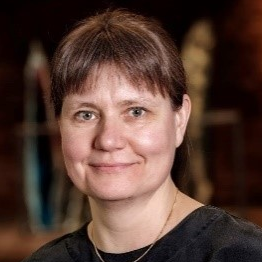Urban Wastewater Treatment and Sustainable Drainage Systems
A special issue of Water (ISSN 2073-4441). This special issue belongs to the section "Urban Water Management".
Deadline for manuscript submissions: closed (31 December 2020) | Viewed by 13271
Special Issue Editors
Interests: environmental engineering; urban water management; wastewater treatment; drainage systems
Interests: environmental engineering; urban water management; wastewater treatment; drainage
Interests: environmental engineering; urban water management; wastewater and solid waste handling
Interests: environmental engineering; urban water management; wastewater treatment; drainage systems
Special Issue Information
Dear Colleagues,
“Urban Wastewater Treatment and Sustainable Drainage Systems” is a broad theme covering several specialized urban water disciplines. In the field of water management, interdisciplinary holistic approaches will become increasingly more important as population and urbanization increase, effluent standards for wastewater systems become more stringent, climate change advances, and pollution sources become more complex. Many problems are interlinked, and future solutions need to address multiple challenges of urban living simultaneously (flooding, recreation, heat waves, etc.). So far, the focus of the research community regarding sustainable drainage systems (SuDS) has been on the stormwater handling and flood mitigation capacities of these systems. Considering the more stringent future prospect, it is high time that the quantitative and the qualitative effects of SuDS on the efficiency and operation of wastewater treatment plants (WWTP) are also investigated.
Furthermore, future solutions will require contributions not only from wastewater experts but also from those working in city planning, law, regulation, etc. In order to illustrate this shift in perspective, we believe that case studies and conceptual designs will be important contributions to this Special Issue.
In particular, we welcome contributions that present solutions or case studies focusing not only on hydraulics, treatment efficiency, and SuDS’ effects on urban wastewater treatment, but also on how they produce other effects in the built environment. Contributions focusing on how solutions are perceived by residents and on decision support systems in the form of models that can be used in discussions among engineers and city planners are scarce. Our aim is to present progress in this area.
Prof. Dr. Henrik Aspegren
Prof. Dr. Lena Blom
Prof. Dr. Jes la Cour Jansen
Dr. Karin Jönsson
Prof. Dr. Ann Mattsson
Guest Editors
Manuscript Submission Information
Manuscripts should be submitted online at www.mdpi.com by registering and logging in to this website. Once you are registered, click here to go to the submission form. Manuscripts can be submitted until the deadline. All submissions that pass pre-check are peer-reviewed. Accepted papers will be published continuously in the journal (as soon as accepted) and will be listed together on the special issue website. Research articles, review articles as well as short communications are invited. For planned papers, a title and short abstract (about 100 words) can be sent to the Editorial Office for announcement on this website.
Submitted manuscripts should not have been published previously, nor be under consideration for publication elsewhere (except conference proceedings papers). All manuscripts are thoroughly refereed through a single-blind peer-review process. A guide for authors and other relevant information for submission of manuscripts is available on the Instructions for Authors page. Water is an international peer-reviewed open access semimonthly journal published by MDPI.
Please visit the Instructions for Authors page before submitting a manuscript. The Article Processing Charge (APC) for publication in this open access journal is 2600 CHF (Swiss Francs). Submitted papers should be well formatted and use good English. Authors may use MDPI's English editing service prior to publication or during author revisions.
Keywords
- urban wastewater treatment
- sustainable drainage systems
- decision support systems
- city planning
- holistic wastewater planning
- conceptual water design
Benefits of Publishing in a Special Issue
- Ease of navigation: Grouping papers by topic helps scholars navigate broad scope journals more efficiently.
- Greater discoverability: Special Issues support the reach and impact of scientific research. Articles in Special Issues are more discoverable and cited more frequently.
- Expansion of research network: Special Issues facilitate connections among authors, fostering scientific collaborations.
- External promotion: Articles in Special Issues are often promoted through the journal's social media, increasing their visibility.
- e-Book format: Special Issues with more than 10 articles can be published as dedicated e-books, ensuring wide and rapid dissemination.
Further information on MDPI's Special Issue polices can be found here.









